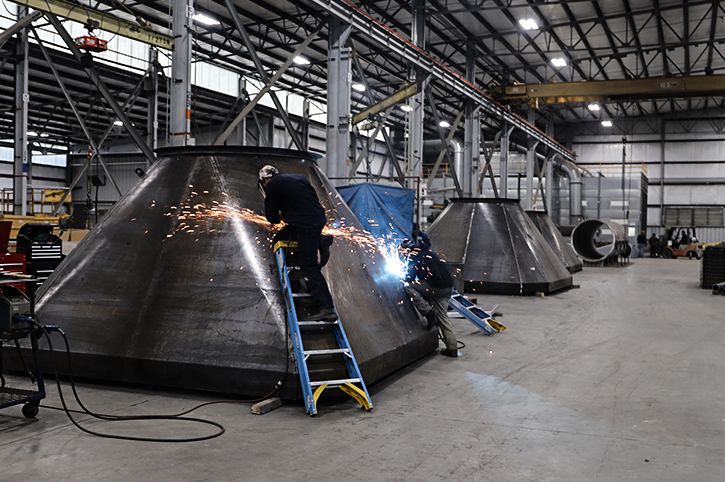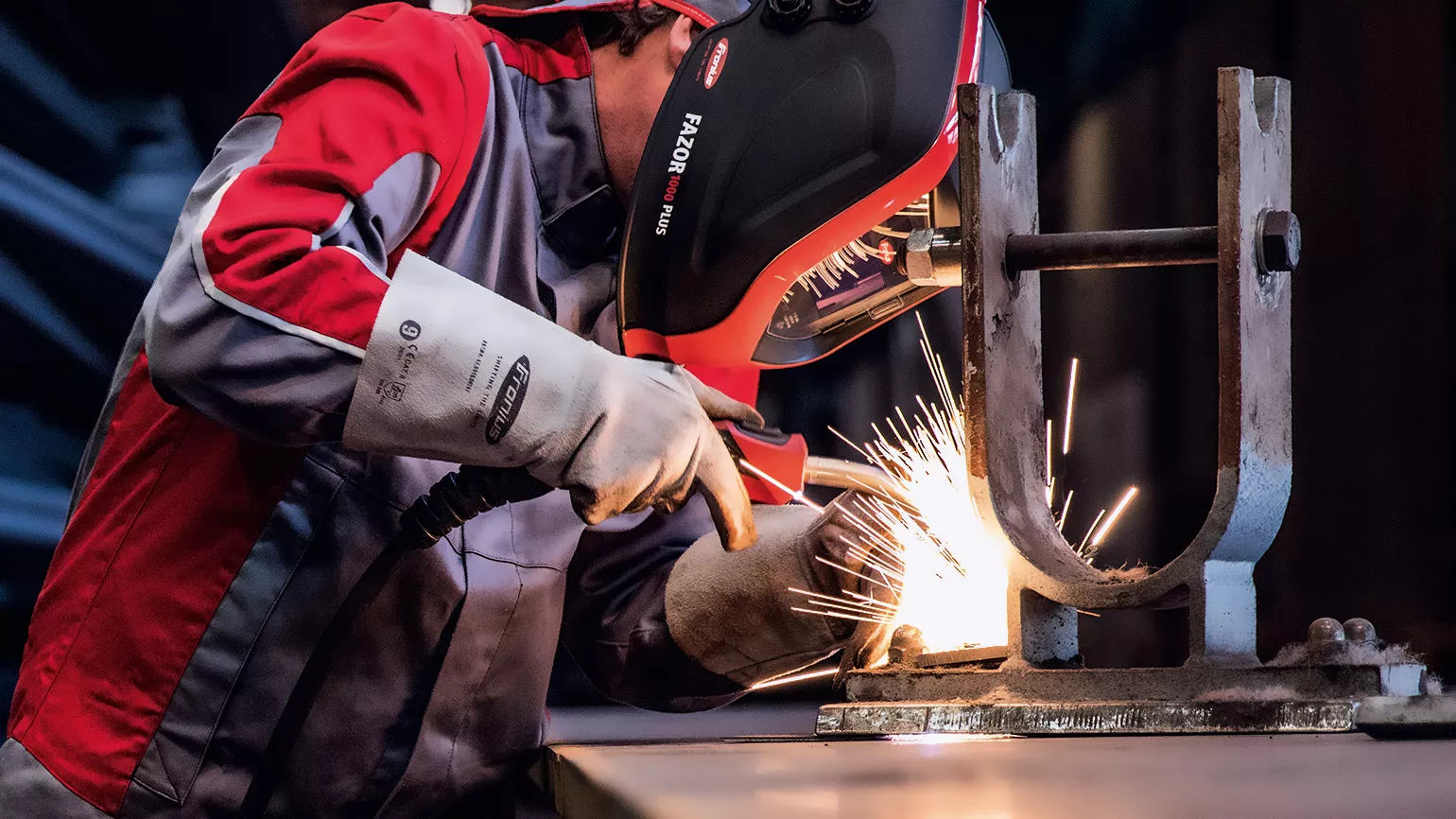Typical Welding Repair Service Issues and Exactly How to Address Them Efficiently
Welding repair services frequently come across a variety of problems that can endanger the integrity of the end product. Common problems include inadequate penetration, porosity, and imbalance, amongst others. Each issue offers unique challenges that need particular techniques for resolution. Understanding these issues is vital for welders intending to boost their skills and outcomes. This discussion will check out these common welding repair work problems and effective methods to address them.
Inadequate Infiltration
Poor penetration occurs when the weld steel stops working to completely fuse with the base product, leading to weak joints and prospective architectural failures. This problem commonly originates from inadequate warmth input, incorrect electrode angle, or incorrect welding rate. Welders may experience inadequate penetration due to a mistake of the required parameters for a details product thickness or kind. Additionally, contamination on the base product's surface area can impede effective bonding, intensifying the trouble. To attend to inadequate infiltration, welders must ensure ideal settings on their devices and maintain a tidy work surface area. Routine examination of welds is advised to recognize any shortages early, permitting prompt adjustments and the avoidance of compromised structural honesty in welded assemblies.
Porosity
Porosity is an usual flaw in welded joints that shows up as tiny gas bubbles entraped within the weld steel. This flaw can compromise the integrity of the weld, resulting in lowered stamina and prospective failing under tension. Montana Mobile Welding and Repair. Porosity usually emerges from contamination, moisture, or inappropriate welding methods, which allow gases to run away right into the liquified weld swimming pool. To address porosity, welders should ensure appropriate surface preparation, preserve a tidy workplace, and make use of ideal welding criteria. In addition, picking the appropriate filler product and securing gas can minimize gas entrapment. Normal examination and screening of welds can assist determine porosity early, assuring timely rehabilitative activities are taken, therefore protecting the high quality and reliability of the bonded framework
Misalignment
Imbalance in welding can arise from numerous elements, consisting of improper setup and thermal development. Understanding the origin is necessary for efficient resolution. Several correction strategies are readily available to realign components and assure architectural honesty.
Reasons of Misalignment
Welding misalignment often originates from a range of underlying problems that can jeopardize architectural stability. One main cause is improper fit-up of parts prior to welding, which can cause voids and unequal surface areas. Variations in thermal expansion during the welding process can also result in distortion, especially if the materials being joined have different coefficients of growth. Additionally, inadequate securing and fixturing may fail to hold elements safely in position, bring about movement throughout welding. Badly conserved equipment, consisting of welding machines and tools, may present disparities in the weld grain, more adding to imbalance. Operator error, stemming from not enough training or experience, can also play a considerable role in producing misaligned welds.

Adjustment Methods Readily Available
Addressing misalignment properly needs a mix of rehabilitative strategies customized to the particular problems at hand. One typical technique is using jigs or components to hold elements in the right position throughout welding, ensuring consistent positioning. In addition, preheating the materials can assist minimize distortion and improve fit-up. For significant misalignment, mechanical adjustment methods, such as making use of hydraulic jacks or clamps, can be employed to remedy the position before welding. Post-weld heat treatment may likewise be essential to eliminate anxieties brought on by misalignment. Careful evaluation and change throughout the configuration stage can prevent misalignment problems from becoming substantial problems, advertising a smoother welding process and boosting total architectural integrity.
Distortion
Distortion is an usual challenge in welding that can arise from numerous elements, including irregular cooling and heating. Recognizing the reasons of distortion is important for carrying out effective avoidance strategies. Resolving this problem not just enhances structural honesty but additionally boosts the general top quality of the weld.
Sources of Distortion
When subjected to the extreme warm of welding, materials commonly go through changes that can bring about distortion. This sensation mainly arises from thermal growth and contraction during the welding process. As the weld area heats up, the product broadens; upon cooling, it gets, which can develop internal stress and anxieties. In addition, unequal heating throughout a work surface can aggravate these stresses, leading to warping or bending. The kind of material additionally plays a substantial role; metals with differing thermal conductivity and coefficients of development may react in a different way, resulting in unpredictable distortions. Poor joint design and poor fixturing can contribute to imbalance throughout welding, raising the probability of distortion. Understanding these causes is vital for reliable welding repair work and prevention approaches.
Prevention Techniques
Reliable prevention strategies for distortion throughout welding concentrate on regulating heat input and making sure correct joint useful source layout. Preserving a constant warm input helps to minimize thermal development and contraction, which can lead to distortion. Making use of methods such as pre-heating the workpiece can also decrease the temperature level slope, promoting consistent home heating. In addition, picking suitable joint styles, such as T-joints or lap joints, can improve stability and lower tension concentrations. Carrying out proper fixturing to secure the workpieces in place better aids in preserving placement throughout the welding process. Finally, staggered welding sequences can distribute heat much more equally, avoiding localized distortion. By applying these methods, welders can considerably lower the possibility of distortion and enhance the general quality of their welds.
Fracturing
Fracturing is a typical concern encountered in welding repair work, often resulting from numerous variables such as improper cooling rates, product choice, or poor joint preparation. The occurrence of cracks can substantially compromise the integrity of the weld, causing prospective failings during procedure. To resolve this concern, welders must first analyze the source, making sure that products work and appropriately chosen for the particular application. Additionally, controlling the air conditioning price throughout the welding process is essential; quick cooling can induce anxiety and lead to fracturing. Appropriate joint layout and prep work also add to decreasing the risk. Executing these techniques can improve weld top quality and resilience, ultimately reducing the likelihood of splitting in completed weldments.

Incomplete Blend
A considerable problem in welding repair services is insufficient fusion, which occurs when the weld metal does not effectively bond original site with the base material or previous weld passes - Belgrade Welding. This problem can bring about weaknesses in the joint, potentially jeopardizing the honesty of the bonded structure. Elements adding to incomplete fusion include insufficient warm input, incorrect welding method, and contamination of the surfaces being joined. To resolve this issue efficiently, welders must guarantee appropriate pre-weld cleaning and surface area preparation, along with change their welding parameters to accomplish appropriate penetration and fusion. Routine examination throughout the welding process can also aid identify insufficient fusion early, enabling timely rehabilitative actions to improve the overall high quality of the weld
Overheating
While welding fixings can boost structural integrity, overheating provides a significant challenge that can cause product destruction. Excessive warm during welding can change the mechanical homes of steels, causing lowered strength, raised brittleness, and warping. This phenomenon is especially vital in high-stress applications where structural integrity is critical. Identifying getting too hot can include visual examinations for discoloration or distortion, in addition to checking temperature level during the welding process. To alleviate the dangers related to overheating, welders ought to employ ideal methods, such as controlling heat input, readjusting traveling rate, and using appropriate filler products. Furthermore, applying pre- and post-weld heat therapies can help bring back material residential or commercial properties and enhance the general high quality of the repair work, guaranteeing long-term efficiency and safety.
Often Asked Inquiries
What Are the Typical Indicators of a Welding Flaw?

Exactly How Can I Check My Welds for Top quality?
To examine welds for high quality, one can use aesthetic examinations, ultrasonic screening, and radiographic methods. Each method guarantees architectural stability, identifies problems, and confirms adherence to specified requirements, eventually improving the reliability of the welded joints.
What Safety Precautions Should I Take While Welding?
When welding, one should prioritize safety by putting on ideal individual protective equipment, ensuring correct ventilation, safeguarding flammable products away, keeping a clean workspace, and knowing environments to avoid accidents and injuries.
Can I Fix a Weld Without Redesigning the Entire Joint?
Repairing a weld without redoing the whole joint more info here is possible, relying on the damage (Fabrication). Techniques such as grinding, adding filler material, or making use of a welding procedure can properly attend to details imperfections while protecting the surrounding framework
What Tools Are Crucial for Efficient Welding Repairs?
Necessary tools for efficient welding fixings include a welding equipment, wire brush, mill, safety gear, clamps, and filler products. Each tool plays a crucial role in making certain quality and security throughout the repair work procedure. Porosity generally emerges from contamination, dampness, or improper welding methods, which permit gases to escape into the liquified weld swimming pool. Badly kept tools, including welding makers and devices, may introduce incongruities in the weld grain, further adding to imbalance. When subjected to the extreme warm of welding, materials typically undergo modifications that can lead to distortion. Breaking is a typical problem run into in welding repairs, typically resulting from different aspects such as inappropriate air conditioning prices, product option, or poor joint prep work. A significant issue in welding repairs is incomplete fusion, which occurs when the weld steel does not appropriately bond with the base material or previous weld passes.
Comments on “Signs of weld failure and what Belgrade can do about them”